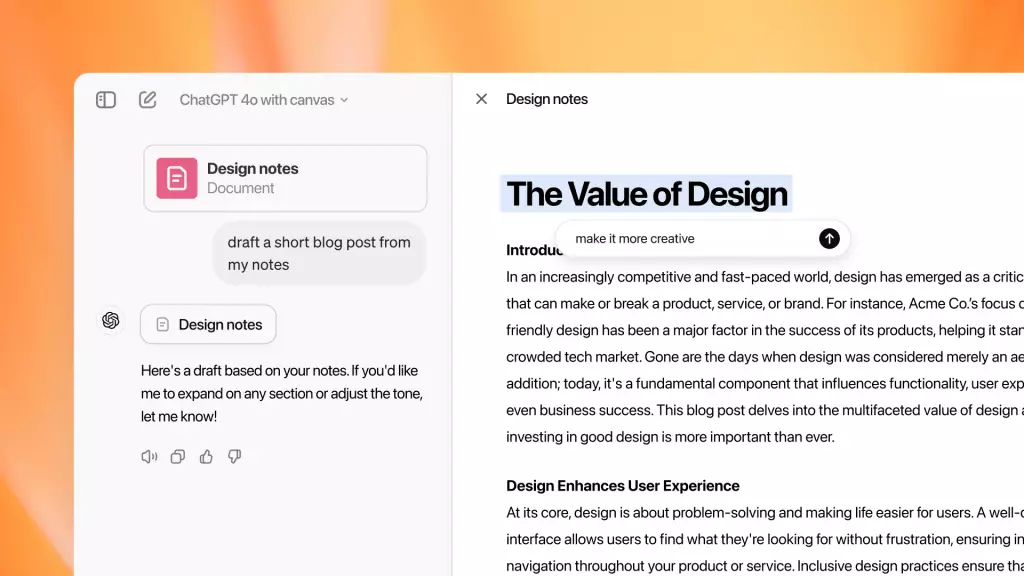OpenAI has made significant strides in democratizing access to advanced digital tools, as evidenced by its recent announcement regarding Canvas, a novel editing space integrated within the ChatGPT framework. Previously an exclusive feature for paying subscribers—namely, ChatGPT Plus, Teams, Edu, and Enterprise users—Canvas is now available to all users. This decision is part of OpenAI’s broader initiative dubbed “12 Days of OpenAI,” aimed at enhancing user experience and engagement during the holiday season.
A Game-Changing Interface
The Canvas feature revolutionizes how users interact with the ChatGPT interface. Traditionally, users would navigate a standard conversation setup with a text entry field at the bottom. However, with Canvas, the layout transforms to include a sidebar on the left, facilitating a more dynamic workspace. On the right side, users have the capability to engage directly with the content they are creating, be it code snippets or text documents. This innovative shift eliminates the need for users to switch back and forth between chat responses and content revisions, enabling a more seamless editing experience.
One of the hallmark features of Canvas is its capacity for real-time updates. When users request changes or revisions to their content, these alterations are executed immediately within the sidebar without necessitating a full text regeneration. This efficiency allows for quicker iterations and enhances productivity, especially for users who work in coding or document editing environments. Furthermore, Canvas actively suggests improvements for both text and code, enriching the collaborative nature of the tool.
In a significant upgrade, OpenAI has integrated Canvas with GPT-4o, allowing it to launch automatically in response to specific prompts or pasted content. This functionality is currently available for desktop users and Windows app iterations of ChatGPT, ensuring that users can take full advantage of its capabilities wherever they access the service. Compared to its competition, such as Anthropic’s Claude Artifacts, which has long offered live previews of generated code, Canvas now brings users closer to that level of interactivity by enabling Python code execution directly within the editing space. This feature reduces prior limitations, where users had to transfer code out to verify functionality.
Paving the Way for Customization
For developers and users eager to craft personalized solutions, Canvas is set to be an invaluable tool. It will automatically integrate into newly created custom GPTs, allowing users to customize when and how it operates effectively. While developers of existing custom models might initially find Canvas not deployed as a default feature—an intentional decision to maintain workflow continuity—the potential for future adaptability remains significant.
The rollout of Canvas marks a pivotal moment in OpenAI’s commitment to enhancing user engagement and operational efficiency. With its user-friendly interface, real-time interactivity, and integration of coding capabilities, Canvas is not just a feature but a forward-thinking solution that expands the horizons of digital productivity. As OpenAI continues to innovate, it sets a precedent for how technology can simplify and enrich our daily tasks, ultimately fostering a community propelled by creativity and collaboration.


Leave a Reply